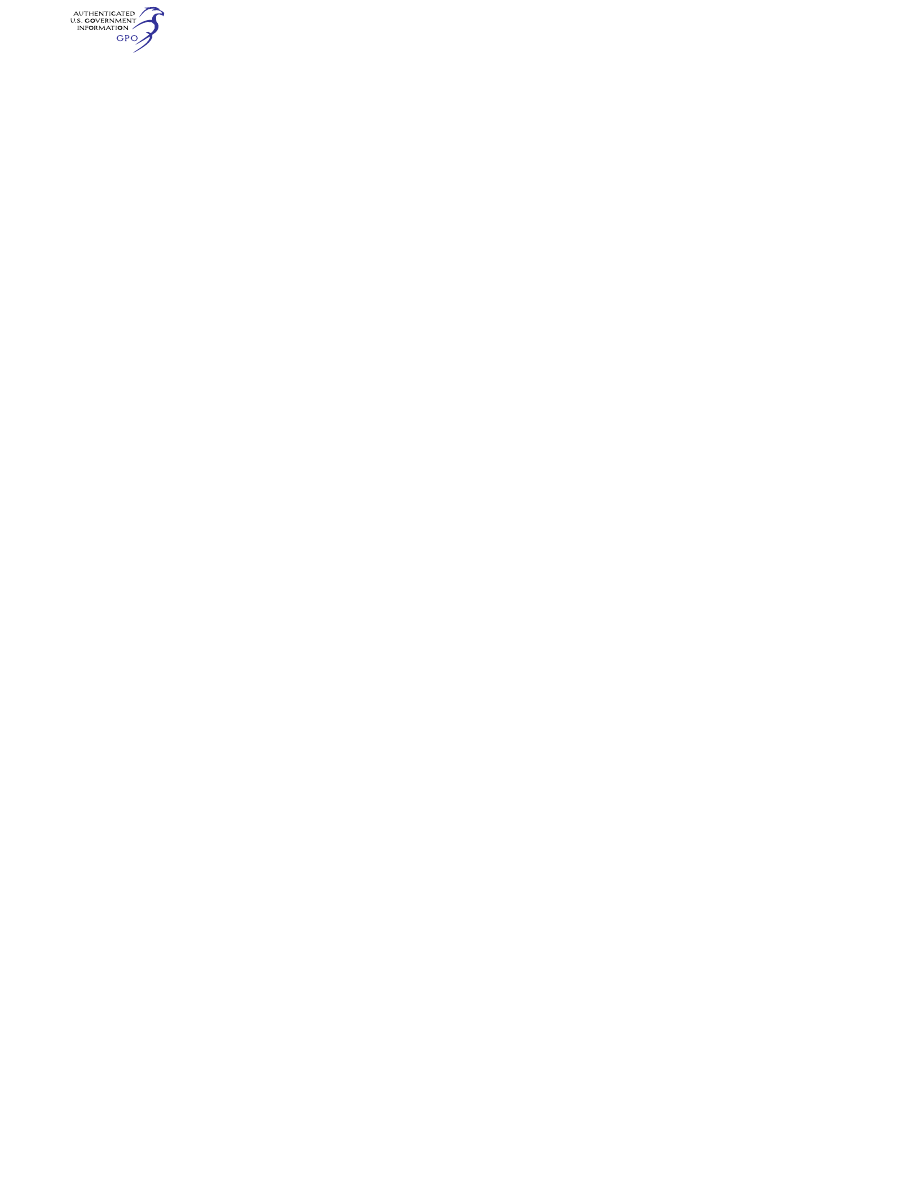
576
14 CFR Ch. I (1–1–24 Edition)
§ 29.1
S
OURCE
: Docket No. 5084, 29 FR 16150, Dec.
3, 1964, unless otherwise noted.
Subpart A—General
§ 29.1
Applicability.
(a) This part prescribes airworthiness
standards for the issue of type certifi-
cates, and changes to those certifi-
cates, for transport category rotor-
craft.
(b) Transport category rotorcraft
must be certificated in accordance
with either the Category A or Category
B requirements of this part. A multien-
gine rotorcraft may be type certifi-
cated as both Category A and Category
B with appropriate and different oper-
ating limitations for each category.
(c) Rotorcraft with a maximum
weight greater than 20,000 pounds and
10 or more passenger seats must be
type certificated as Category A rotor-
craft.
(d) Rotorcraft with a maximum
weight greater than 20,000 pounds and
nine or less passenger seats may be
type certificated as Category B rotor-
craft provided the Category A require-
ments of Subparts C, D, E, and F of
this part are met.
(e) Rotorcraft with a maximum
weight of 20,000 pounds or less but with
10 or more passenger seats may be type
certificated as Category B rotorcraft
provided the Category A requirements
of §§ 29.67(a)(2), 29.87, 29.1517, and sub-
parts C, D, E, and F of this part are
met.
(f) Rotorcraft with a maximum
weight of 20,000 pounds or less and nine
or less passenger seats may be type
certificated as Category B rotorcraft.
(g) Each person who applies under
Part 21 for a certificate or change de-
scribed in paragraphs (a) through (f) of
this section must show compliance
with the applicable requirements of
this part.
[Amdt. 29–21, 48 FR 4391, Jan. 31, 1983, as
amended by Amdt. 29–39, 61 FR 21898, May 10,
1996; 61 FR 33963, July 1, 1996]
§ 29.2
Special retroactive require-
ments.
For each rotorcraft manufactured
after September 16, 1992, each applicant
must show that each occupant’s seat is
equipped with a safety belt and shoul-
der harness that meets the require-
ments of paragraphs (a), (b), and (c) of
this section.
(a) Each occupant’s seat must have a
combined safety belt and shoulder har-
ness with a single-point release. Each
pilot’s combined safety belt and shoul-
der harness must allow each pilot,
when seated with safety belt and shoul-
der harness fastened, to perform all
functions necessary for flight oper-
ations. There must be a means to se-
cure belts and harnesses, when not in
use, to prevent interference with the
operation of the rotorcraft and with
rapid egress in an emergency.
(b) Each occupant must be protected
from serious head injury by a safety
belt plus a shoulder harness that will
prevent the head from contacting any
injurious object.
(c) The safety belt and shoulder har-
ness must meet the static and dynamic
strength requirements, if applicable,
specified by the rotorcraft type certifi-
cation basis.
(d) For purposes of this section, the
date of manufacture is either—
(1) The date the inspection accept-
ance records, or equivalent, reflect
that the rotorcraft is complete and
meets the FAA-Approved Type Design
Data; or
(2) The date that the foreign civil air-
worthiness authority certifies the
rotorcraft is complete and issues an
original standard airworthiness certifi-
cate, or equivalent, in that country.
[Doc. No. 26078, 56 FR 41052, Aug. 16, 1991]
Subpart B—Flight
G
ENERAL
§ 29.21
Proof of compliance.
Each requirement of this subpart
must be met at each appropriate com-
bination of weight and center of grav-
ity within the range of loading condi-
tions for which certification is re-
quested. This must be shown—
(a) By tests upon a rotorcraft of the
type for which certification is re-
quested, or by calculations based on,
and equal in accuracy to, the results of
testing; and
(b) By systematic investigation of
each required combination of weight
and center of gravity, if compliance
VerDate Sep<11>2014
09:06 Jun 28, 2024
Jkt 262046
PO 00000
Frm 00586
Fmt 8010
Sfmt 8010
Y:\SGML\262046.XXX
262046
jspears on DSK121TN23PROD with CFR
